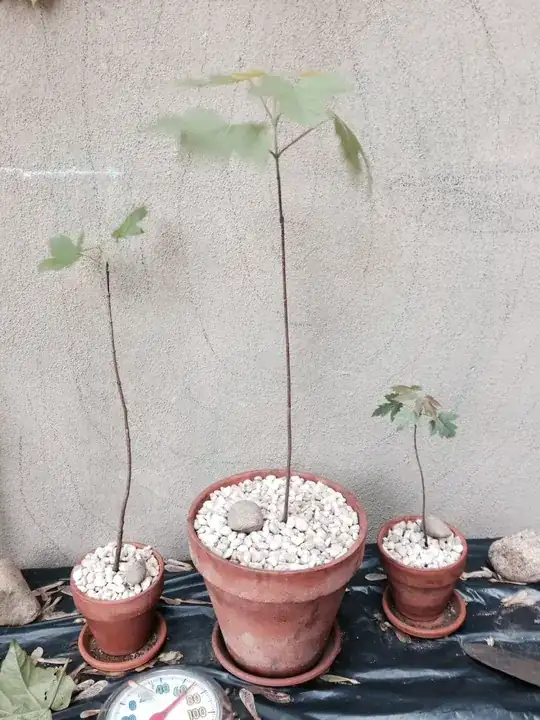I second some of @kevinsky's answer, but would add that most North American or European Maples probably won't make good bonsai due to their relatively enormous leaves. What looks like a bonsai is relative, but for most people it's making a small plant look like a large tree. There aren't very many large trees with 50-foot leaves on them, which is the look you'd get by using those species.
Also, growing them in a pot will take a long time for them to develop enough biomass to give them that "small tree" look. It won't grow leaves it can't support with its root system, and it can't grow a large root system in a small pot, so it'll typically stay at the size it is when you pot it. I've seen some people grow bonsai in pots...sometimes indoors no less, but this can take decades.
Most real bonsai are first grown in the ground for several years until they get a good trunk size (a few inches). Given the species, they may get up to a dozen feet tall or more. Then they're drastically chopped back during early spring/late winter, sometimes almost to a few inches from the ground, and left there to again grow back smaller branches. This is repeated a few more years until the branches look "ramified" as they would on a full-sized mature tree and only then is it finally dug up and grown in a pot.
